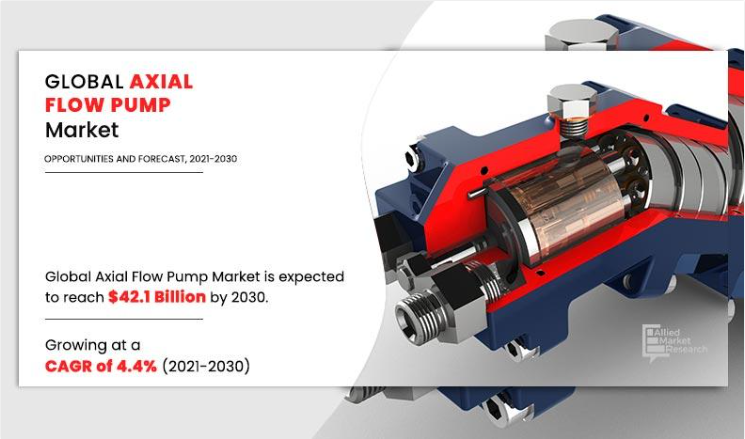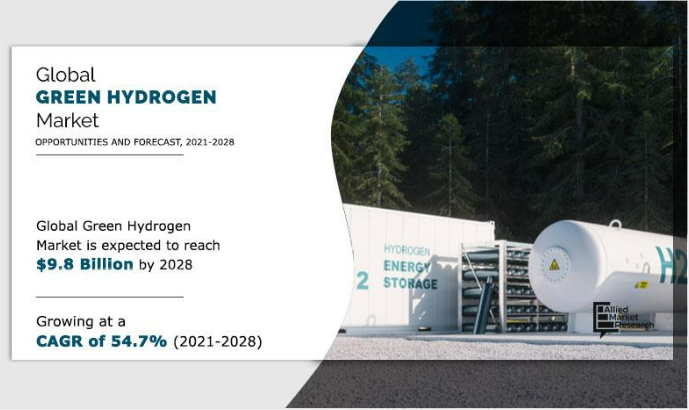The biomass gasification market was valued at $88.0 billion in 2021, and is estimated to reach $188.5 billion by 2031, growing at a CAGR of 8% from 2022 to 2031. Biomass gasification is a process to convert biomass into gases and energy. This is done through combustion at high temperatures under a controlled oxygen supply. This process yields carbon monoxide, carbon dioxide, and hydrogen. The carbon monoxide produced is treated in water where it reacts with water molecules to further produce hydrogen and carbon dioxide. The hydrogen hence produced is used as fuel or feedstock in several applications. Whereas, carbon dioxide is used by plants for photosynthesis.
Get a PDF brochure for Industrial Insights and Business Intelligence @ https://www.alliedmarketresearch.com/request-sample/9662
Biomass gasification market growth is driven by several factors, such as the presence of biomass in abundance. Since biomass is available in massive amounts, rather than being incinerated or ending up in landfills, biomass, especially MSW source of biomass, is combusted to produce heat and gas. This heat and gases are further used as fuel, feedstock, and other such uses.
The market is highly driven by increased activities in solid waste management, increased electrification in urban as well as rural areas, depleting fossil fuels, and rapid commercialization of biomass gasification. Reducing carbon footprint by producing energy from biomass boosts the growth of the biomass gasification market. Moreover, several governments are considering biomass gasification as a cleaner alternative to producing hydrogen and heat as relatively fewer greenhouse gases are emitted in the process rather than incinerating the biomass. However, high installation and maintenance cost discourages market growth at its full potential. This acts as a restraint for biomass gasification market growth.
The major challenge faced by the biomass gasification industry is that these gasification plants can only be set up majorly for small and medium outputs. The larger plants are expensive and require to be maintained frequently. This remains a great challenge to bring down the cost of the technology and hence commercialize the biomass gasification industry. However, biomass gasification market opportunities lie in overcoming the challenges by advancing and commercializing the existing technologies.
The biomass gasification market size is segmented on the basis of gasifier type, application, source, and region. By gasifier type, the market is segmented into moving or fixed bed, fluidized bed, entrained, and others. By gasifier type, the moving or fixed bed gasifiers segment dominated the market share for 2021. The moving or fixed bed gasifier can be operated at very high temperatures which act as a driving factor for market growth.
Enquiry Before Buying: https://www.alliedmarketresearch.com/purchase-enquiry/9662

However, they produce a high amount of tar or unfinished char, and thus, during the biomass gasification market forecast, the fluidized bed is expected to grow at a higher CAGR. Fluidized bed gasifiers are complicated systems, but are capable of producing gas with a very high heating value.
Depending on the application, the market is divided into chemicals, liquid fuels, power, and gas fuels. The power sectors garnered the largest market biomass gasification market share in terms of revenue for 2021 and is expected to continue to grow at a higher CAGR. This is attributed to the fact that the heat energy produced will majorly be sourced into the production of electricity as it will prove to be a cleaner form of electricity generation, especially in a scenario where reducing carbon footprint and increasing primary energy production is being sought out.
On the basis of source, the market is further divided into solid biomass, liquid biomass, biogas, municipal waste, and others. The solid biomass segment dominated the market share for 2021 and is expected to grow at a higher CAGR during the forecast period. This is attributed to a large amount of available solid biomass in the forms of wood pellets, wood chippings, corncobs, soybeans, sugar cane, switchgrass, woody plants, and food processing residues.
Region-wise, the biomass gasification market analysis is done across North America, Europe, Asia-Pacific, and LAMEA (Latin America, the Middle East, and Africa). Europe dominated the market for biomass gasification in 2021 and is expected to maintain its dominance during the projection years. This is owing to the presence of major players in the market and the fact that Europe is committed to reducing its dependence on fossil fuels for primary energy following its 2030 and net zero 2050 targets. European Union is a big consumer of primary energy owing to its high energy demands during winter as well as summer seasons owing to its weather, and thus, relying on biomass gasification seems as a much more feasible and environment-friendly option to cut down carbon emissions and produce energy.
The key players in the biomass gasification industry are Beltran Technologies, Inc., Vaskiluodon Voima Oy, EQTEC plc, Chanderpur Works Private Limited, Ankur Scientific Energy Technologies Pvt. Ltd., Infinite Energy Pvt. Ltd., Valmet Corporation, KASAG Swiss AG, Goteborg Energi AB, and Thyssenkrupp AG.
Procure Complete Report @ https://www.alliedmarketresearch.com/checkout-final/dbd276f8e3feacc9b6e94278ebe49a2f
Key findings of the study:
- Europe is projected to grow at the highest CAGR of approximately 8.3%, in terms of revenue during the biomass gasification market forecast period
- The power application dominated the biomass gasification market share by over 56.9% in 2021
- By source, solid biomass dominated the biomass gasification market and is expected to grow at a CAGR of 8.2% during the forecast period
- Patent analysis shows that China holds 61.4% of patents in the biomass gasification market.
About Us
Allied Market Research (AMR) is a full-service market research and business-consulting wing of Allied Analytics LLP based in Portland, Oregon. Allied Market Research provides global enterprises as well as medium and small businesses with unmatched quality “Market Research Reports” and “Business Intelligence Solutions.” AMR has a targeted view to provide business insights and consulting to assist its clients to make strategic business decisions and achieve sustainable growth in their respective market domains.
Pawan Kumar, the CEO of Allied Market Research, is leading the organization toward providing high-quality data and insights. We are in professional corporate relations with various companies and this helps us in digging out market data that helps us generate accurate research data tables and confirms the utmost accuracy in our market forecasting. Each and every data presented in the reports published by us is extracted through primary interviews with top officials from leading companies of the domain concerned. Our secondary data procurement methodology includes deep online and offline research and discussion with knowledgeable professionals and analysts in the industry.
Contact:
David Correa
5933 NE Win Sivers Drive
#205, Portland, OR 97220
United States
USA/Canada (Toll-Free):
+1-800-792-5285, +1-503-894-6022
UK: +44-845-528-1300
Hong Kong: +852-301-84916
India (Pune): +91-20-66346060
help@alliedmarketresearch.com
Web: www.alliedmarketresearch.com
Allied Market Research Blog: https://blog.alliedmarketresearch.com
Follow Us on | Facebook | LinkedIn | YouTube |






